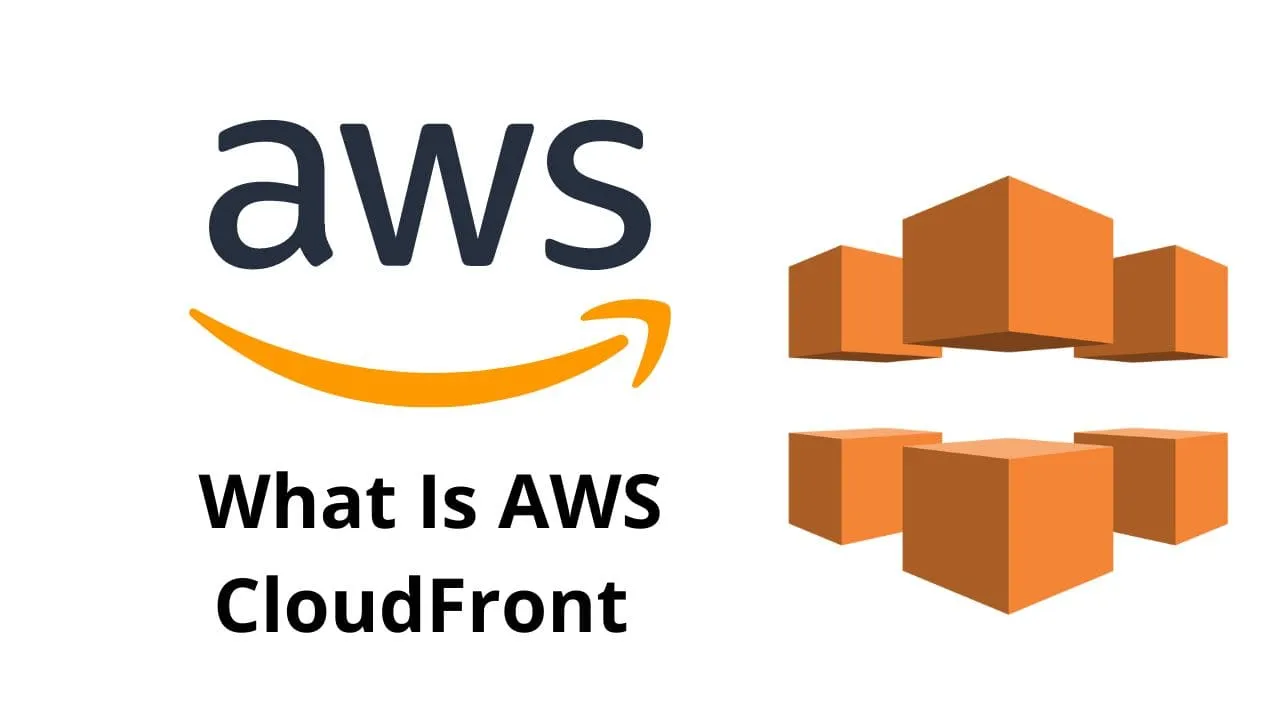Amazon CloudFront (AWS CDN): A Comprehensive Guide on the Power of Amazon CloudFront
 Saurabh Adhau
Saurabh Adhau

Introduction
Amazon CloudFront is not just another cloud service—it's a content delivery powerhouse designed to elevate your web content delivery to new heights. In this comprehensive guide, we'll explore the key features of Amazon CloudFront, unravel the magic behind edge locations, and regional edge cache and delve into concepts like Time-To-Live (TTL) and cache invalidation. 🚀

AWS CloudFront🌍
Amazon CloudFront is a content delivery network (CDN) service provided by Amazon Web Services (AWS). It helps deliver content, such as web pages, videos, images, and other static and dynamic assets, to users globally with low latency and high transfer speeds. CloudFront accelerates the distribution of your content by caching it at edge locations, which are strategically located around the world.
Here's a detailed explanation of how CloudFront works with an example:
Key Concepts:
Edge Locations:
CloudFront uses a network of edge locations that are distributed globally. These locations act as caching servers to store copies of your content.
When a user requests content, CloudFront automatically delivers it from the nearest edge location, reducing latency.
Origin:
- The origin is the source of the content that CloudFront distributes. This can be an Amazon S3 bucket, an EC2 instance, an Elastic Load Balancer, or even a custom origin server.
Distribution:
- Distribution is the name given to the CDN configuration, specifying the settings for the content delivery, such as the origin, cache behaviour, and more.
How CloudFront Works:
User Requests Content:
- A user requests content (e.g., a web page, an image, or a video) by entering a URL in their browser.
CloudFront Checks Edge Location:
- CloudFront checks if the requested content is already in the cache at the edge location closest to the user.
Cache Hit:
- If the content is found in the cache (cache hit), CloudFront delivers it directly to the user, reducing latency.
Cache Miss:
- If the content is not in the cache (cache miss), CloudFront retrieves the content from the origin (e.g., an S3 bucket or a web server).
Content is Cached:
- CloudFront caches the content at the edge location for future requests. The TTL (Time-To-Live) determines how long the content is stored in the cache.
Distribution of Content:
- Subsequent requests for the same content from other users in the same geographic region are served directly from the edge location, improving performance.
Example Scenario:
Let's say you have a website hosted on an Amazon S3 bucket, and you want to use CloudFront to distribute the content globally.
Create a CloudFront Distribution:
- Set up a new CloudFront distribution and configure it to use your S3 bucket as the origin.
Distribution Settings:
- Define cache behaviors, set security options (e.g., HTTPS), and configure other settings based on your requirements.
Distribution Deployment:
- Once configured, CloudFront will deploy the distribution, and the system will start caching content at edge locations.
User Requests Content:
- When a user from a specific location requests a page or file from your website, CloudFront serves the content from the nearest edge location.
Optimized Performance:
- Subsequent requests for the same content from users in that region are served directly from the edge location, optimizing performance and reducing load on the origin server.
By using CloudFront, you can improve the speed and availability of your web content, providing a better experience for your users across the globe.
Features of CloudFront
Global Content Delivery:
- CloudFront operates a global network of edge locations, enabling the delivery of content to users around the world with low latency and high transfer speeds.
Edge Caching:
- Content is cached at edge locations, reducing the load on the origin server and improving the response time for subsequent requests.
Dynamic Content Support:
- CloudFront supports both static and dynamic content, allowing you to accelerate the delivery of dynamic, personalized content.
HTTPS Support:
- CloudFront provides secure content delivery by allowing you to configure SSL/TLS (HTTPS) for your distributions.
Origin Fetch Optimization:
- CloudFront optimizes the fetching of content from the origin server, reducing the latency for cache misses.
Global and Regional Distributions:
- You can configure CloudFront distributions to be either global or regional, allowing you to optimize content delivery based on your specific use case.
Custom Domain Support:
- CloudFront supports custom domain names, enabling you to use your own domain or subdomain for content delivery.
Live and On-Demand Video Streaming:
- CloudFront supports both live and on-demand streaming of video content, allowing you to deliver high-quality video experiences to users.
Origin Shield:
- Origin Shield is a feature that helps protect your origin server from spikes in requests by caching content at a centralized shield location.
Access Logs:
- CloudFront provides detailed access logs that can be analyzed to gain insights into user behavior and troubleshoot issues.
Real-Time Metrics and Monitoring:
- CloudFront provides real-time metrics and monitoring through AWS CloudWatch, allowing you to track the performance of your distributions.
Security Features:
- CloudFront integrates with other AWS services, such as AWS Identity and Access Management (IAM) and AWS WAF (Web Application Firewall), providing security features to protect against various threats.
Integration with AWS Services:
- CloudFront seamlessly integrates with other AWS services, including Amazon S3, Elastic Load Balancing, and AWS Elemental Media Services.
Cache Invalidation:
- You can manually invalidate objects in the cache or configure behaviors to automatically update the cache when the content at the origin changes.
Cost-Effective Pricing:
- CloudFront offers a pay-as-you-go pricing model, allowing you to pay only for the data transfer and requests you use.
Edge Location in CloudFront
Edge locations play a crucial role in the functioning of Amazon CloudFront. These locations are part of a global network of data centres strategically positioned around the world to deliver content with low latency and high transfer speeds. Here's an explanation of edge locations and how they work in CloudFront:
Edge Locations:
Number and Distribution:
- Amazon CloudFront has a large and constantly expanding network of edge locations. As of my last knowledge update in January 2022, there were over 250 edge locations across the globe.
Caching Servers:
- Each edge location is essentially a caching server. These servers store copies of your content, including images, videos, web pages, and other assets.
Low Latency Delivery:
- The goal of edge locations is to reduce latency by delivering content from a location that is physically closer to the end user. This minimizes the time it takes for the content to travel from the server to the user's device.
Request Routing:
- When a user makes a request for content that is part of a CloudFront distribution, the request is automatically routed to the edge location that provides the lowest latency for that user.
How Edge Locations Work in CloudFront:
Content Delivery:
- When a user requests content, CloudFront automatically directs that request to the nearest edge location based on the user's geographic location.
Cache Check:
- The edge location checks if the requested content is already present in its cache. If the content is found (cache hit), it is served directly to the user.
Cache Miss:
- If the content is not in the cache (cache miss), the edge location fetches the content from the origin (such as an Amazon S3 bucket or a custom server).
Caching and TTL:
- The retrieved content is cached at the edge location. The Time-To-Live (TTL) setting determines how long the content stays in the cache before it expires.
Subsequent Requests:
- For a certain duration (based on TTL), subsequent requests for the same content from users in the same geographic region are served directly from the edge location, avoiding the need to fetch it from the origin server.
Global Distribution:
- CloudFront ensures that content is distributed across multiple edge locations globally, optimizing delivery for users in different regions.
Benefits of Edge Locations in CloudFront:
Reduced Latency:
- Users experience lower latency because the content is delivered from nearby edge locations.
High Transfer Speeds:
- The global network of edge locations ensures high transfer speeds for content delivery.
Scalability:
- CloudFront can scale easily to handle varying levels of demand, ensuring consistent performance during traffic spikes.
Cost-Effective:
- By caching content at edge locations, CloudFront reduces the load on the origin server, leading to cost savings in terms of reduced server and data transfer costs.
In summary, edge locations in CloudFront are the distributed points of presence that enable the efficient and fast delivery of content to end users worldwide. They form a critical part of the CDN infrastructure, enhancing the performance, reliability, and scalability of content delivery.
Time-To-Live (TTL) & Cache Invalidation
Time-To-Live (TTL)⏳:
Definition:
- TTL refers to the amount of time that CloudFront caches an object at an edge location before it considers the cached copy as stale and revalidates it with the origin server.
Key Points:
Default TTL:
- By default, CloudFront uses a TTL of 24 hours for objects in the cache. This means that, if an object is not requested within that time frame, CloudFront will revalidate it with the origin server before serving it to the next user.
Custom TTL:
- You can customize the TTL for specific objects or behaviors within your CloudFront distribution. This allows you to control how long content is cached based on your specific requirements.
Cache-Control Headers:
- CloudFront uses the Cache-Control headers from the origin to determine the TTL. If the Cache-Control headers specify a maximum age, CloudFront uses that value. Otherwise, it falls back to the default TTL.
S3 Object Metadata:
- If you are using an Amazon S3 bucket as the origin, you can also set the TTL using the "Cache-Control" metadata on individual objects.
Example: Suppose you have a website with static images, and you want to set a TTL of one hour for those images to ensure that users receive the latest versions promptly. You can configure the CloudFront distribution with a custom TTL of one hour for the path or behaviour associated with those images.
Cache Invalidation🚫:
Definition:
- Cache invalidation is the process of removing or invalidating objects from the cache before their TTL expires. This is useful when you update or change content at the origin, and you want to ensure that users receive the latest version without waiting for the TTL to expire.
Key Points:
Manual Invalidation:
- CloudFront allows you to manually invalidate objects through the AWS Management Console, AWS CLI, or API. This process marks the specified objects as invalid, and the next request for those objects triggers a fetch from the origin server.
Wildcard Invalidation:
- You can use wildcard characters (*) to invalidate multiple objects that match a specified pattern. For example, you could invalidate all images in a particular directory.
Limitations:
- While cache invalidation is a powerful tool, it's important to note that it might take some time for the invalidation to propagate to all edge locations. Additionally, there is a cost associated with invalidation requests.
Example: Suppose you have updated the homepage of your website, and you want to ensure that all users see the updated version immediately. You can manually initiate a cache invalidation for the homepage path or use a wildcard to invalidate all objects associated with the homepage.
In summary, TTL controls how long CloudFront caches an object before revalidating it, and cache invalidation allows you to manually remove objects from the cache before their TTL expires. These mechanisms provide flexibility in managing the caching behavior of your content delivery network.
Conclusion 🌟
Amazon CloudFront is not just a CDN; it's your key to a faster, more reliable, and globally optimized content delivery experience. Whether you're delivering static assets or dynamic content, CloudFront's features, coupled with the magic of edge locations, make it a robust solution for your content delivery needs. Embrace the power of CloudFront, and elevate your user experience to new heights! 🚀🌐
Subscribe to my newsletter
Read articles from Saurabh Adhau directly inside your inbox. Subscribe to the newsletter, and don't miss out.
Written by

Saurabh Adhau
Saurabh Adhau
As a DevOps Engineer, I thrive in the cloud and command a vast arsenal of tools and technologies: ☁️ AWS and Azure Cloud: Where the sky is the limit, I ensure applications soar. 🔨 DevOps Toolbelt: Git, GitHub, GitLab – I master them all for smooth development workflows. 🧱 Infrastructure as Code: Terraform and Ansible sculpt infrastructure like a masterpiece. 🐳 Containerization: With Docker, I package applications for effortless deployment. 🚀 Orchestration: Kubernetes conducts my application symphonies. 🌐 Web Servers: Nginx and Apache, my trusted gatekeepers of the web.